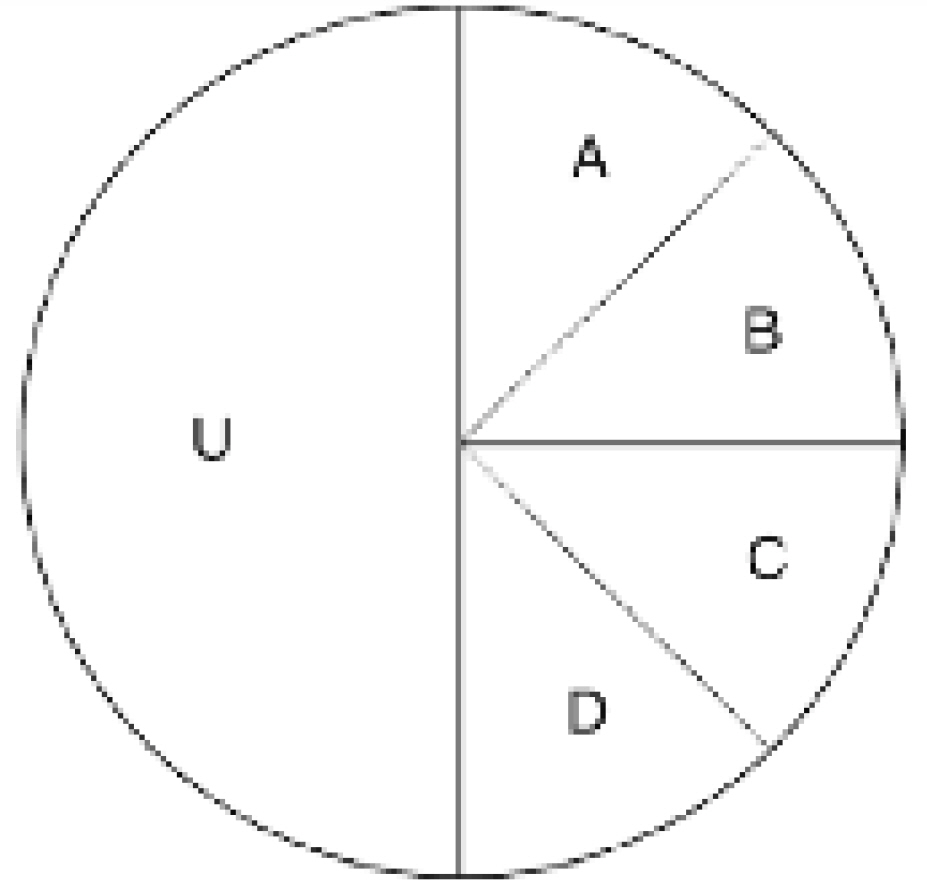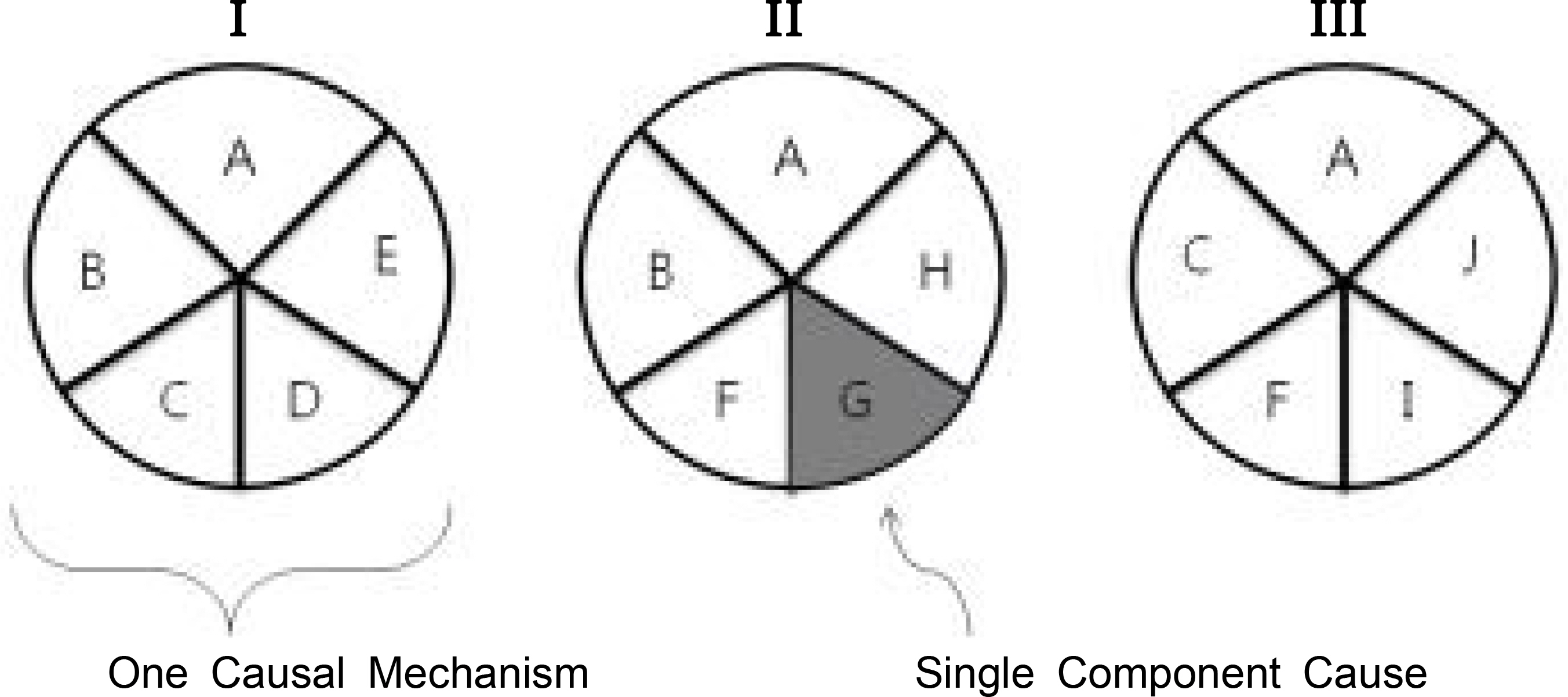Articles
- Page Path
- HOME > Kosin Med J > Volume 28(2); 2013 > Article
-
Review Article
Epidemiology and Causation - Jungwon Kim
-
Kosin Medical Journal 2013;28(2):87-97.
DOI: https://doi.org/10.7180/kmj.2013.28.2.87
Published online: January 19, 2013
Deparment of Occupational & Environmental Medicine, College of Medicine, Kosin University, Busan
- Corresponding author: Jungwon Kim, Deparment of Occupational & Environmental Medicine, College of Medicine, Kosin University, 34 Amnamdong, Seo-gu, Busan, 602-702, Korea TEL: +82-51-990-6368 FAX: +82-51-990-6694 E-mail: hedoc68@gmail.com
• Received: May 27, 2013 • Accepted: November 9, 2013
Copyright © 2013 Kosin University School of Medicine Proceedings
This is an Open Access article distributed under the terms of the Creative Commons Attribution Non-Commercial License (http://creativecommons.org/licenses/by-nc/3.0/) which permits unrestricted non-commercial use, distribution, and reproduction in any medium, provided the original work is properly cited.
- 1,735 Views
- 39 Download
- 2 Crossref
Abstract
-
- In medicine and public health areas, it is essential for researchers and clinicians to investigate causal relationships dealing with the terms of cause, causation and causality. In treating a patient, the treatment will be given based on the assumption that that treatment will cause an improvement or cure of the patient. For diagnosis, we need a causation concept to associate diseases with etiologic factors such as genetic, environmental, occupational and other components. The prevention and intervention of a disease involve the selecting process of probable causal factors too.
- The causal problem is one of main issues in philosophy since ancient Greek. Aristotle theorized material, formal, efficient, and formal causes. Francis Bacon and Descartes mainly used induction and deduction, respectively. Hume denied the capacity of inductive methodologies to find truth. Among philosophers of science, the debates whether we can find objective truth or not will be continued. This causation can be two subsets, ontological and epistemological (or methodological). Traditional philosophical approaches mainly focus on ontological problems, such as what is causation?; are there causal laws? In general, scientific or epidemiological approaches are dealing with the epistemological dimension, i.e, causation criteria; test for a causal hypothesis.
- For clinicians and researchers in medical and public health, it would be a good chance to review and re-think the notions of cause, causation and causality. Also there will be helpful understanding of more detail informations about the methodology such as causal inference, Hill’s criteria and Rothman’s causal pie model.
Fig. 1.(A) A necessary cause, (B) A sufficient cause, (C) A necessary and sufficient cause, (D) Most of causes.


Fig. 3.Depiction of the constellation of component causes that constitute a sufficient cause, and U represents all of the other unspecified event, conditions.


Table 1.Definitions of causation and their criticism from the epidemiological literature
Table 2.Hill‘s criteria and their problems
- 1.Elwood JMCritical appraisal of epidemiological studies and clinical trials. 3rd ed.New York: Oxford University Press; 2007.
- 2.Mun JS, Choi SD, Jo SG. The historical-critical study of the important epistemological interpretations of the status of the principle of causality. The New Korean Philosophical Association. J NKPA 1998;15:113–35.
- 3.Rothman KJInferring causal connections –habit, faith or logic? In: Rothman KJeditor.., editors. Causal Inferences. Chestnut Hill (MA): Epidemiology Resources Inc; 1988. p.3–12..
- 4.Rothman KJWhat is causation? In: Epidemiology: an introduction. 2nd ed.New York: Oxford University Press; 2012. p. 23–37.
- 5.Choi HC. Hume's causation conception and scientific explanation. Philosophical Studies 2006;20:67–97.
- 6.Yan SR. A probablistic analysis of causation. Philosophy 1990;34:171–196.
- 7.Jang DI. Kuhn and Popper, Science has something special. Gimmyoung Publishers 2008.
- 8.Yoon SK, Lee SY. A study on the evolution of the philosophy of science. J Soc Sci 1998;9:189–213.
- 9.Lee YC. Science and truth: Popper vs. Wittenstein-Davidson. Philosophy 1993;39:303–24.
- 10.Shin JS. Science and philosophy of science. Science Philosophy and Culture 1995;15:79–98.
- 11.Bunge MCausality and modern science. 3rd edition.New York: Dover Publication; 1979.
- 12.Broadbent A. Conceptual and methodological issues in epidemiology: an overview. Prev Med 2011;53:215–6.ArticlePubMed
- 13.Hill AB. Observation and experiment. N Engl J Med 1953;248:995–1001.ArticlePubMed
- 14.Greenland SEvolution of epidemiologic ideas: annotated readings on concepts and methods. 1st ed.Newton Lower Falls (MA): Epidemiology Resources Inc; 1987.
- 15.Parascandola M, Weed DL. Causation in epidemiology. J Epidemiol Community Health 2001;55:905–12.ArticlePubMedPMC
- 16.Kundi M. Causality and the interpretation of epidemiologic evidence. Environ Health Perspect 2006;114:969–74.ArticlePubMedPMC
- 17.Hill AB. The environment and disease: association or causation? Proc R Soc Med 1965;58:295–300.ArticlePubMedPMC
- 18.Lagiou P, Trichopoulos D, Adami HOConcept in cancer epidemiology and etiology. In: Adami HO, Hunter D, Trichopoulos Deditors.., editors. Textbook of Cancer Epidemiology. 2nd ed.New York: Oxford University Press; 2008. p. 127–54.
- 19.Weed DLCausal criteria and Popperian refutation. In: Rothman KJeditor.., editors. Causal Inferences. Chestnut Hill (MA): Epidemiology Resources Inc; 1988. p.15–32..
- 20.Thygesen LC, Andersen GS, Andersen H. A philosophical analysis of the Hill criteria. J Epidemiol Community Health 2005;59:512–6.ArticlePubMedPMC
- 21.Rothman KJ. Causes. Am J Epidemiol 1976;104:587–92.ArticlePubMed
- 22.Lee WC. Completion potentials of sufficient component causes. Epidemiology 2012;23:446–53.ArticlePubMed
- 23.Parascandola M. Causes, risks, and probabilities: probabilistic concepts of causation in chronic disease epidemiology. Prev Med 2011;53:232–4.ArticlePubMed
- 24.Olsen J. What characterises a useful concept of causation in epidemiology? J Epidemiol Community Health 2003;57:86–8.ArticlePubMedPMC
- 25.Olsen J, Christensen K, Murray J, Ekbom AAn introduction to epidemiology for health professionals. 1st ed.New York: Springer; 2010.
- 26.Rothman KJ, Greenland S, Poole C, Lash TL. Causation and causal inference In: Rothman KJ, Lash TL, Greenland S, editors. Modern epidemiology. 3rd ed. Philadelphia: 2012. p..5–31.
- 27.Rothman KJEpidemiology: an introduction. 2nd ed.New York: Oxford University Press; 2012.
- 28.Higginson J. Proportion of cancer due to occupation. Prev Med 1980;9:180–8.PubMed
- 29.Bernstein DI, Bernsten IL, Chan-Yeung M, Malo J. Definition and classification of asthma in the workplace In: Bernstein DI, Chan-Yeung M, Malo J, Bernsten IL, editors. Asthma in the Workplace. 3rd ed. New York: 2006. p..1–8.
References
Figure & Data
References
Citations
Citations to this article as recorded by 

- Causal Criteria in Medical and Biological Disciplines: History, Essence, and Radiation Aspect. Report 1. Problem Statement, Conception of Causes and Causation, False Associations
A. N. Koterov
Biology Bulletin.2019; 46(11): 1458. CrossRef - Compensation for Work-Related Hematologic, Liver, and Infectious Diseases
Jung-Won Kim, Dong-Mug Kang
Journal of Korean Medical Science.2014; 29(Suppl): S66. CrossRef

 KOSIN UNIVERSITY COLLEGE OF MEDICINE
KOSIN UNIVERSITY COLLEGE OF MEDICINE


 PubReader
PubReader ePub Link
ePub Link Cite
Cite




